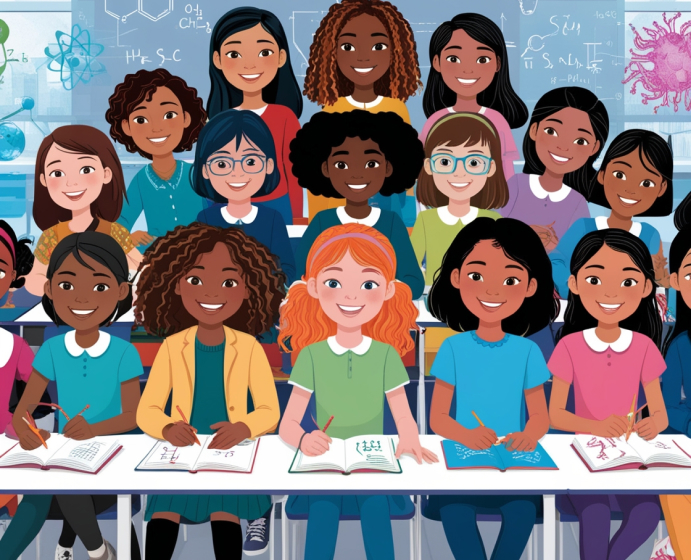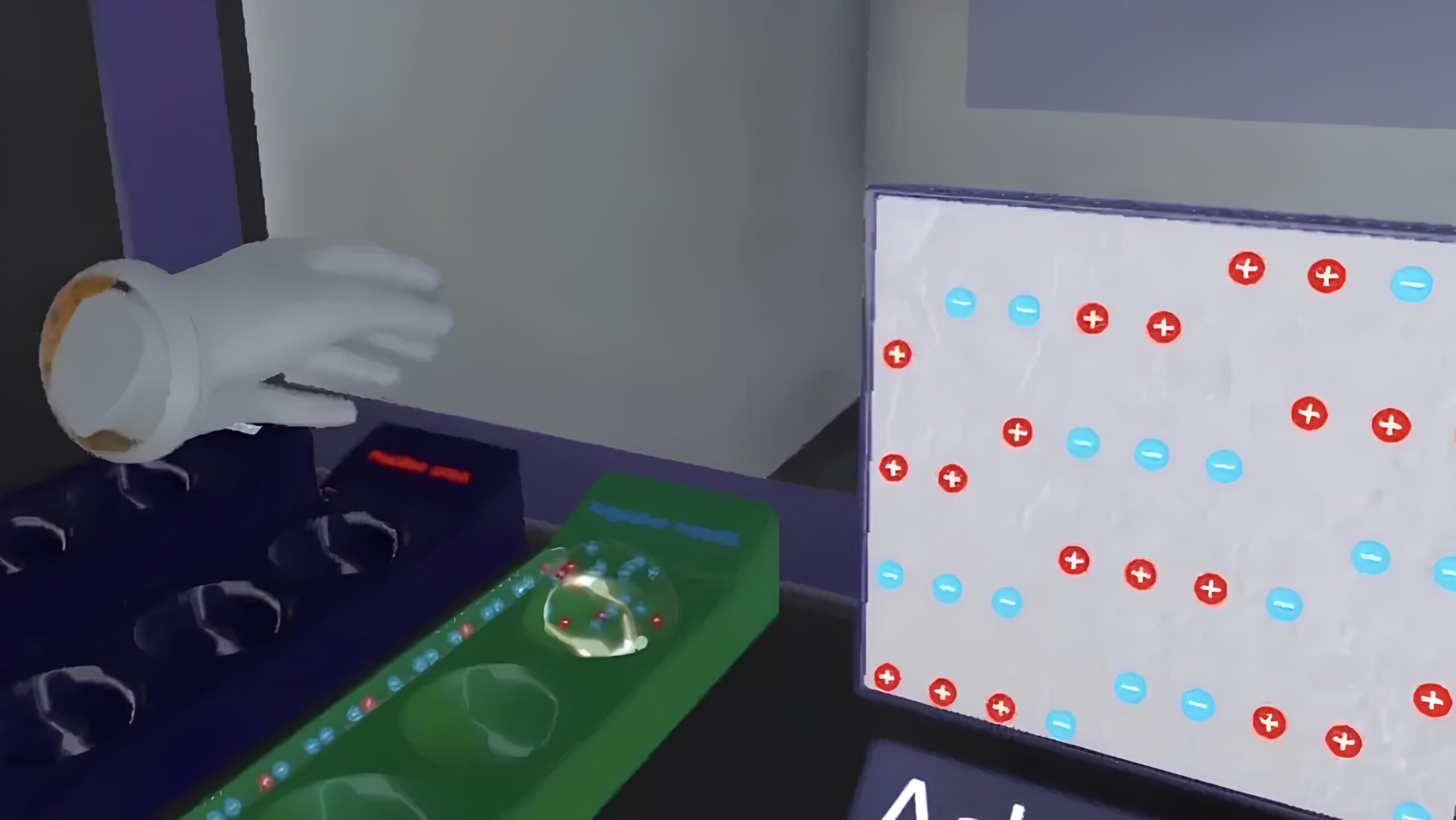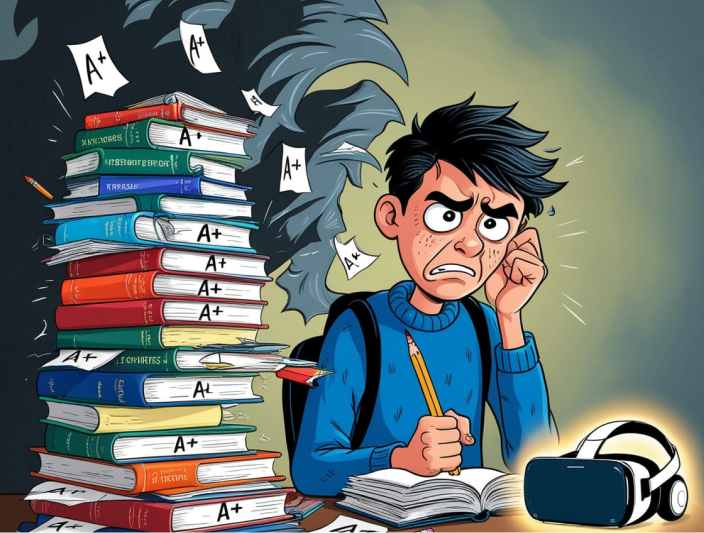
Understanding the intricate structure and function of the human eye is a fundamental aspect of biology education across various curricula worldwide. However, traditional teaching methods often fall short in conveying the complexity of this vital organ. Virtual reality in education is changing the landscape, offering immersive and interactive experiences that make learning more engaging and effective.
Dive into the VR Laboratory: "Structure of the Human Eye"
Our VR biology application, "Structure of the Human Eye," invites students to embark on an exciting journey into eye anatomy. This virtual laboratory provides an immersive environment where learners can:
Assemble the Eye Step by Step: Start with the three primary layers of the eye and progressively add components like the cornea, iris, and lens.
Understand the Intricate Workings: Explore how the pupil and lens function to regulate light intake and focus images.
Interact in Real Time: Adjust parameters such as light intensity and object distance to see immediate effects on vision.
Compatible VR Equipment
To ensure accessibility and ease of integration into the VR classroom, our simulation is compatible with various VR headsets:
Meta Quest
Meta Quest 2
Meta Quest Pro
Pico Neo 3
Pico 4
This compatibility allows schools with different technological capabilities to incorporate the simulation seamlessly into their digital classrooms.
Learning Objectives Aligned with Global Curricula
Our VR simulation aligns with major educational standards, making it a valuable tool for educators worldwide. The learning objectives include:
Identifying the Parts of the Eye: Understand the components that make up the eye, including the three layers and additional structures.
Exploring the Function of the Lens: Learn how the lens refracts light to focus images on the retina.
Understanding Pupil Dynamics: Discover how the pupil adjusts its size to control the amount of light entering the eye.
Comprehending Light Refraction: Visualize how light bends as it passes through different parts of the eye.
Studying Vision at Different Distances: See how the eye accommodates to focus on objects both near and far.
Curriculum Alignments
Cambridge (Biology)
Upper Secondary:
IGCSE: Sense organs
O-level: Receptors, Reflex action
International Baccalaureate (IB) (Biology)
Diploma Programme:
Core Topic: Perception of stimuli
Indian Curriculum CBSE (Science/Biology)
Secondary Stage (Classes 9-10):
Topic: Human Eye and Colourful World
CBSE Class 12 Board Exam:
Topic: Human Eye and the Colourful World
National Curriculum of the Netherlands (Biology)
VMBO (Klas 3/4): Oog (Eye)
HAVO (Klas 4/5): Oog (Eye)
VWO (Klas 4/5): Oog (Eye)
Scuola Secondaria in Italia (Biologia)
Scuola Secondaria di Primo Grado:
Classe 2/3: Occhio umano (Human Eye)
Scuola Secondaria di Secondo Grado:
Classe 3/4: Anatomia dell’occhio (Eye Anatomy)
Educational Aims
Research the Structure and Function of the Human Eye: Delve deep into the anatomy and physiology of the eye.
Assemble and Test the Eye: Build the eye from its basic layers to the complete organ and test its functions.
Control Eye Functions: Manipulate the pupil diameter and lens curvature to achieve optimal vision under various conditions.
The Advantages of Virtual Reality in Studying the Human Eye
Overcoming Limitations of Traditional Methods
In traditional school settings, studying the human eye poses several challenges:
Lack of Hands-On Experience: Ethical and legal restrictions prevent dissection or manipulation of human organs in schools.
Static Models: Physical models are often rigid and do not demonstrate dynamic processes like accommodation or pupil reflex.
Abstract Concepts: Textbooks and diagrams can make it difficult for students to grasp three-dimensional structures and functions.
Immersive and Interactive Learning with VR
https://youtu.be/p4MofcAPlV8
Virtual reality learning bridges the gap between theoretical knowledge and practical understanding by offering:
Sequential Building of the Eye: Students start with the foundational layers—the sclera, choroid, and retina—and add components like the cornea, iris, and lens. This step-by-step process mirrors the complexity of the eye's construction.
Real-Time Interaction: Adjust light intensity and object distance to see how the eye responds, demonstrating concepts like pupil dilation and lens accommodation.
Visualization of Light Pathways: Observe how light rays refract through the eye's structures, connecting principles of physics with biological processes.
Connecting Biology and Physics
[caption id="attachment_1643" align="alignnone" width="1024"] XReady Lab VR education: VR Human Eye laboratory[/caption]
The VR simulation not only enhances understanding of biological structures but also integrates physics concepts:
Light Refraction and Focusing: See how the lens bends light to focus images on the retina, and how this changes with lens curvature adjustments.
Accommodation Mechanism: Understand how the eye changes focus from distant to near objects by altering the lens shape.
Pupil Response to Light: Observe the pupil's automatic adjustment to light intensity, controlling the amount of light entering the eye.
Arguments in Favor of VR Biology Education
Ethical Learning: Provides an opportunity to study human anatomy without ethical concerns associated with dissections.
Dynamic Interaction: Unlike static models, VR allows for real-time manipulation and observation of physiological processes.
Enhanced Engagement: The immersive experience captivates students' attention, fostering a deeper interest in the subject matter.
Interdisciplinary Learning: Connects biology with physics by demonstrating how physical principles like light refraction apply to biological systems.
Accessible Exploration: Offers experiences that are impossible in traditional classrooms, such as working with human organs or exploring at cellular and molecular levels.
Experience the Impossible with VR
[caption id="attachment_1642" align="alignnone" width="1024"] XReady Lab VR education: VR Human Eye laboratory[/caption]
VR biology is not just an extension of real-life experiences; it's a gateway to exploring concepts that are otherwise inaccessible in a school environment:
Interactive Organ Dissection: Simulate dissections and explore internal structures without ethical or legal barriers.
Cellular and Molecular Immersion: Dive into microscopic levels to understand processes happening within cells and tissues.
Safe Experimentation: Conduct experiments that would be too dangerous or impractical in a physical classroom.
Request a Free Demo
We invite educators to experience the transformative power of virtual reality education. Our demo package includes a VR cell simulation, offering a glimpse into how immersive technology can revolutionize your biology teaching methods.
👉 Request your free demo today and discover new facets of knowledge with VR.
Conclusion
The study of the human eye's structure and function is crucial in biology education. Traditional teaching methods often fall short in conveying the complexity and dynamic nature of this organ. By integrating virtual reality in education, we can overcome these limitations, providing students with an immersive, interactive, and engaging learning experience.
VR learning enables students to build the eye piece by piece, understand how each component contributes to vision, and observe real-time physiological responses to various stimuli. This hands-on approach not only enhances comprehension but also ignites curiosity and passion for the subject.










